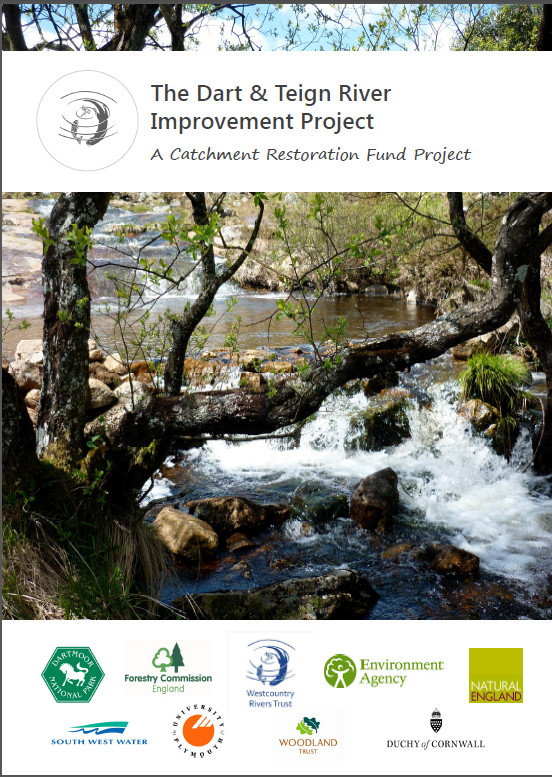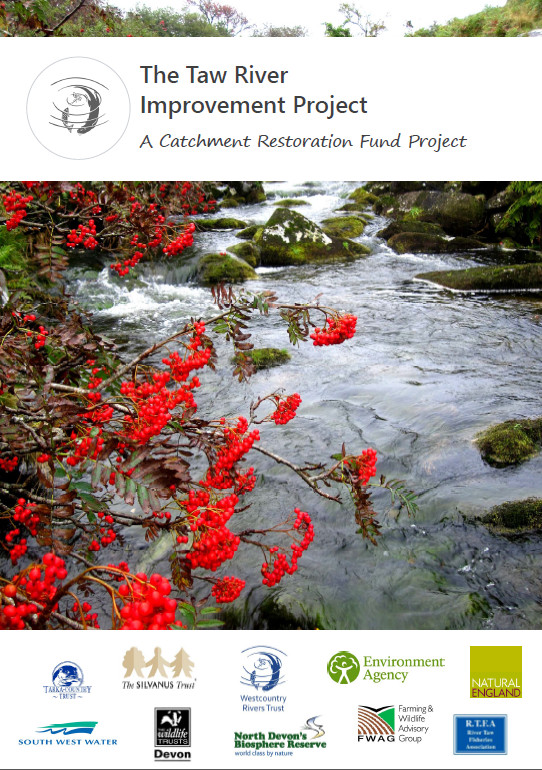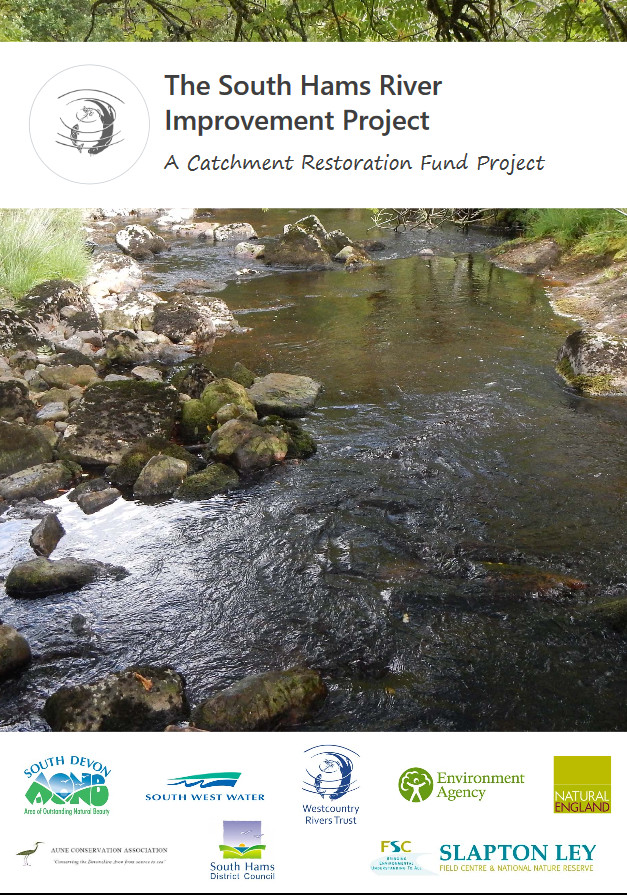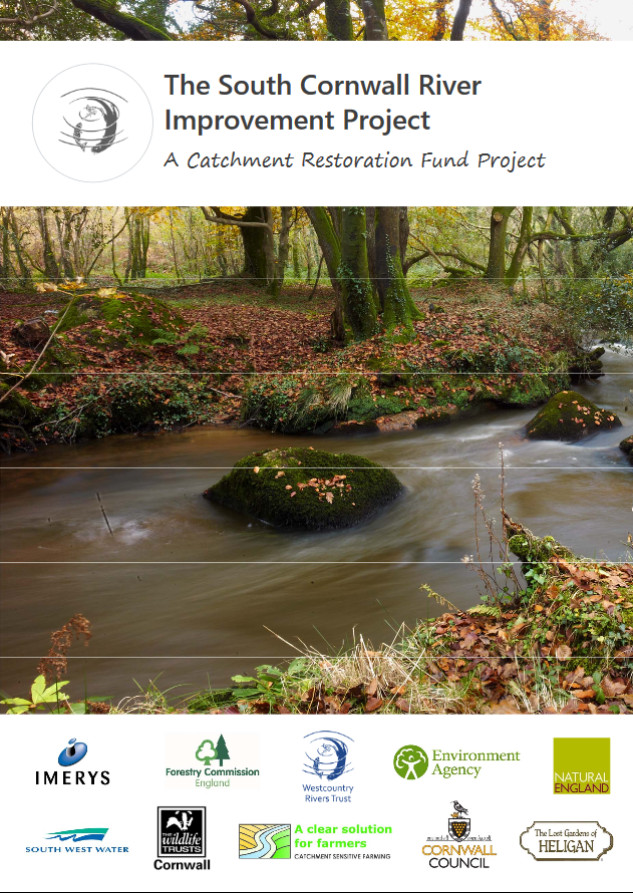The Catchment Restoration Fund
The Department for Environment, Food and Rural Affairs (Defra) created the Catchment Restoration Fund (CRF) in 2012 to help achieve the Water Framework Directive (WFD) status objectives set out for waterbodies in the 2009 River Basin Management Plans (RBMPs).
The fund was allocated for projects in England to be delivered in 2012/13, 2013/14 and 2014/15. The CRF was administered by the Environment Agency to support third sector organisations to deliver catchment-level projects designed to fulfil the following objectives:
- Restore natural features in and around watercourses;
- Reduce the impact of man-made structures on wildlife in watercourses;
- Reduce the impact of diffuse pollution that arises from rural and urban land use.
While the South West of England has some of the UK’s most iconic and beautiful rivers, many of them are experiencing pressures, both current and historic, that limit their ability to function naturally and which cause them to become ecologically degraded.
In 2012, responding to these problems, the Westcountry Rivers Trust (WRT) secured CRF funding to deliver over £4 million of river restoration and catchment management work over three years on river catchments across the South West. These river and catchment restoration projects have been delivered on the rivers of the South Hams, the Axe and Exe, the Dart and Teign, the Rivers of South Cornwall and the Taw. These river improvement projects were specifically developed using a rigorous evidence-led, partnership approach to mitigate the pressure acting on these rivers and improve the health of these precious and vital river ecosystems.
Cost – Benefit Analysis
The projects have now finished and have been a great success, both ecologically and economically. We recently commissioned NEF Consulting Ltd to undertake a cost-benefit evaluation of the CRF projects. This research used extended Cost-Benefit Analysis (CBA) in order to estimate the socio-economic and environmental returns generated by respective projects. For this purpose, this research estimated:
- The potential environmental (ecological) impacts of respective projects
- The potential societal benefits supported by those ecological impacts
- The value of those benefits, expressed in monetary terms
- The Benefit-Cost ratios, i.e. the comparison between the investments put in the projects and the wider benefits generated.
This independent research shows that by improving the water quality and ecological conditions in our catchments there are substantial social benefits generated as well as support for a variety of Ecosystem Services.
The Net Present Value (representing the total benefits, net of costs) is positive for all projects, showing that investing in river improvement projects is economically efficient and effective for everyone.
Read the full report here ….. WRT_FINAL REPORT
The Dart & Teign River Improvement Project (DTRIP)
Overall the DTRIP has been extremely successful in its delivery. All works within each failing WFD waterbody have been informed through sound science and investigation prior and post delivery. This not only ensures that a more accurate ecological condition of each water body is identified, but it ensures that all works delivered are both efficient and effective.
Although it is evident that the three year DTRIP project has been successful in its delivery, three years is a relatively short period to expect significant improvements of water quality. However, we can safely be reassured that works such as barrier easements will improve the rivers connectivity for migrating fish species, and farm works such as fencing will most definitely prevent damage caused by livestock entering the river, and reduces pressure such as bankside erosion. Although these delivery outputs have a small positive impact individually, the cumulative impact though out the catchment will be significant. The project has provided a strong baseline to continue working from. We have conducted many investigations and works, all of which have provided valuable information on the current condition of the river, and pinpointed the locations of some specific pressures that still need to be targeted within the Dart and Teign catchment. It is therefore crucial that this work is continued into the future, not only to ensure that the funds provided under the CRF have been spent efficiently, but also because DTRIP has provided a management foundation, which if built upon will ultimately provide a sustainable future for the catchment.
To view the full report click on the image.
The Taw River Improvement Project (TRIP)
The Taw River Improvement Project (TRIP) is a Catchment Restoration Funded Project, which was administered by the Environment Agency. The project was written and delivered by the Westcountry Rivers Trust in association with the North Devon Catchment Partnership.
The project was delivered over three years (2012-2015), with the primary aim of delivering targeted action to make significant steps towards achieving Water Framework Directive (WFD) waterbody objectives set out in the 2009 River Basin Management Plans.
This report documents the works delivered under the TRIP and describes how these works were targeted to ensure that efficient on the ground management was delivered effectively throughout the catchment.
Although the TRIP has completed its final year, the work that has been delivered and the valuable information and data that has been collected will provide a solid foundation to build upon in the future. This not only provides wider benefits to the society and the environment, but also provides a valuable tool to aid in building a sustainable future for the catchment as whole.
To view the full report click on the image.




